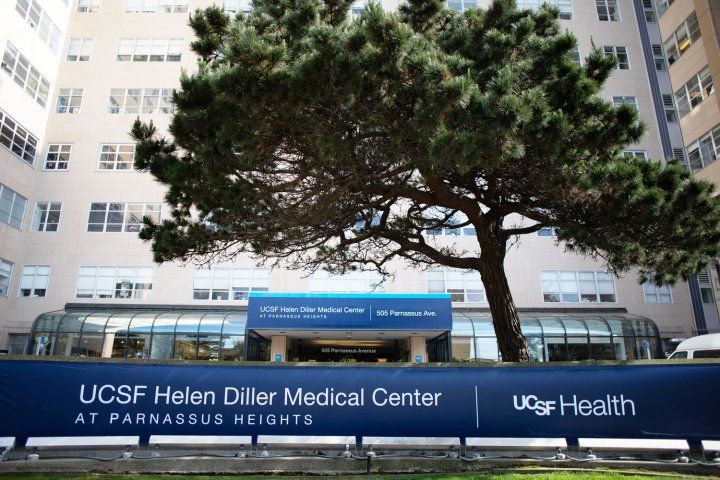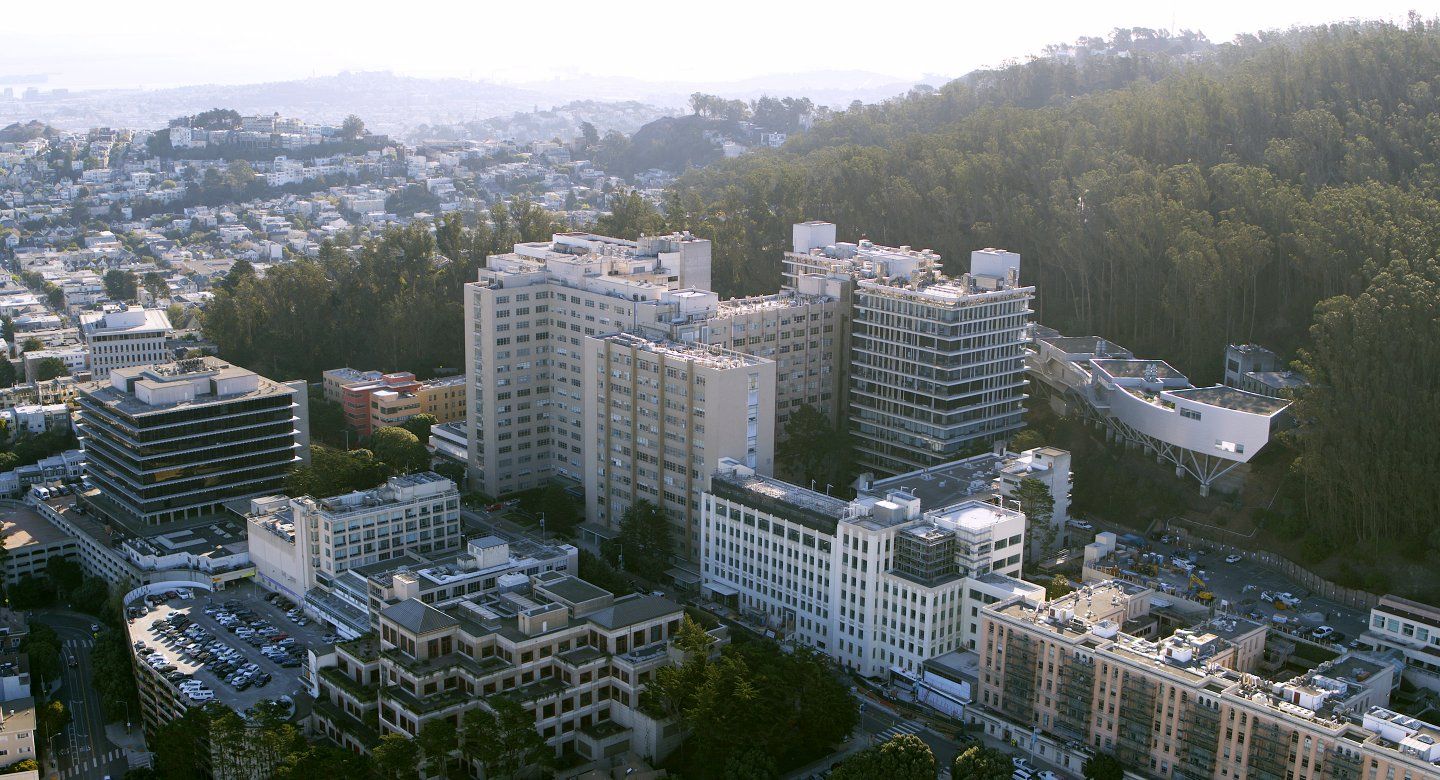Comprehensive Parnassus Heights Plan Moves Forward After UC Regents Vote
UCSF to Build New Hospital and Modernize Campus to Meet Regional Health Care Needs
UC San Francisco is moving forward with its 30-year plan to modernize the University’s Parnassus Heights campus – including the construction of a new state-of-the-art hospital at UCSF Helen Diller Medical Center – after the UC Regents unanimously approved key elements of the plan on Thursday.
On Jan. 21, the Regents certified the Environmental Impact Report for the Comprehensive Parnassus Heights Plan (CPHP), which amends UCSF’s 2014 Long Range Development Plan to adjust the space ceiling limit, projected campus population, and the Mount Sutro Open Space Reserve boundary. The Regents also endorsed the Greenhouse Gas Reduction Strategy to meet the campus goal of being carbon neutral by 2025.
“For more than a century, UCSF has worked with San Francisco to serve the health care needs of those who live in this beautiful, dynamic city – our COVID-19 response being just the most recent example of our close partnership,” said UCSF Chancellor Sam Hawgood, MBBS. “The UC Regents today cleared the way for us to modernize our Parnassus Heights campus where our collaboration began in earnest following the 1906 earthquake. The milestone we are passing today will help ensure the University’s ability to continue driving innovation in care delivery, health sciences research and education – for San Francisco and beyond – for many decades to come.”
The milestone we are passing today will help ensure the University’s ability to continue driving innovation in care delivery, health sciences research and education – for San Francisco and beyond – for many decades to come.
The Regents’ vote follows more than two years of robust community engagement spanning 28 public meetings to develop the CPHP, which reflects input from hundreds of stakeholders inside and outside UCSF.
As a part of the project, the University has reached an agreement in principle on a Memorandum of Understanding (MOU) with the City of San Francisco to memorialize a number of community investments that neighborhood stakeholders and the University identified together. The investments include adding more below-market campus housing, investing in transportation improvements, and augmenting workforce development and training programs. In considering the role the Regents played in establishing the space ceiling for the campus in 1976, the current Board proposed, and UCSF agreed, that Chair John A. Pérez would co-sign the MOU to reinforce the community investment commitments in the agreement.
To bolster the local workforce, UCSF, the San Francisco Building and Construction Trades Council, and Herrero Boldt Webcor, the general contractor hired by the University, announced on Jan. 17 a community workforce agreement that ensures the $3 billion hospital project will employ a union workforce. The project is expected to create 1,000 jobs over its 10-year timeline and stimulate the local economy, helping to address the financial fallout caused by the COVID-19 pandemic.
“UCSF’s proposed CPHP and the community benefits are an essential component of San Francisco’s recovery from the COVID-19 pandemic,” wrote San Francisco Mayor London Breed in a letter of support to the Regents preceding the vote. “We are ready to work with UCSF in the years ahead to ensure that the housing and workforce benefits are delivered on schedule and as promised. The transit funds will be used to address localized neighborhood transit impacts near the campus at a time when our public transit system is especially challenged by the pandemic.”
Meeting the Growing Need for Specialized Health Care
The centerpiece of the Parnassus Heights plan is a new hospital to replace the nearly 70-year-old Moffitt Hospital, which does not meet the state’s seismic code and must be decommissioned for inpatient care by 2030.

The centerpiece of the Parnassus Heights plan is a new hospital to replace the nearly 70-year-old Moffitt Hospital. Photo by Susan Merrell
Every year, UCSF Health turns away about 3,000 patients seeking care because of a lack of bed capacity. The high demand for, and shortage of, hospital beds are expected to increase due to the region’s growing and aging population seeking complex care. The new hospital, slated to open in 2030, will allow the University to keep pace with the region’s growing health care needs.
Buoyed by a $500 million gift from the Helen Diller Foundation, the hospital will be designed by award-winning internationally renowned architects HDR and Herzog & de Meuron – the latter of which designed the de Young Museum in Golden Gate Park. The hospital will be designed to integrate with the natural setting of the surrounding Mount Sutro Open Space Reserve, enhancing the patient experience to promote healing and broadening access to more open space for patients, employees and neighbors.
Investing in the Parnassus Heights Community
The community investments developed by neighborhood stakeholders and UCSF will improve the daily experience of those living in the neighborhood around the campus. In addition to key investments in housing, transit, and workforce development, the plan includes practical solutions such as building a service corridor behind the campus that will remove delivery trucks and service vehicles from Parnassus Avenue.
The Parnassus Heights plan has garnered widespread community and neighborhood support from neighbors, more than 20 community organizations, and elected officials. In advance of the Regents’ vote, San Francisco residents also submitted hundreds of letters of support, and more than 1,000 people signed a petition of support for the University’s plans for Parnassus Heights.
Next Steps
In February 2021, UCSF will begin the formal design process for the new hospital with the community and the architectural firms Herzog & de Meuron and HDR. These meetings will focus on topics such as the exterior building design, site access, pedestrian and vehicular circulation, landscape, and open space connections to Mount Sutro Forest.
In addition to the new hospital, the initial projects to start in the first 10 years will be a new Research and Academic Building, new affordable housing at Aldea for employees and trainees, and a renewed arrival experience on Irving Street.
The plans for the hospital call for designing an architecturally outstanding, energy-efficient and environmentally sustainable facility that will accommodate the advanced technologies UCSF uses in clinical and surgical settings, including robotics and intra-operative imaging. The University will also address the space needs of the medical center’s Emergency Department, which is one of only two that serve the western region of San Francisco.
The University of California, San Francisco (UCSF) is exclusively focused on the health sciences and is dedicated to promoting health worldwide through advanced biomedical research, graduate-level education in the life sciences and health professions, and excellence in patient care. UCSF Health, which serves as UCSF’s primary academic medical center, includes top-ranked specialty hospitals and other clinical programs, and has affiliations throughout the Bay Area.
